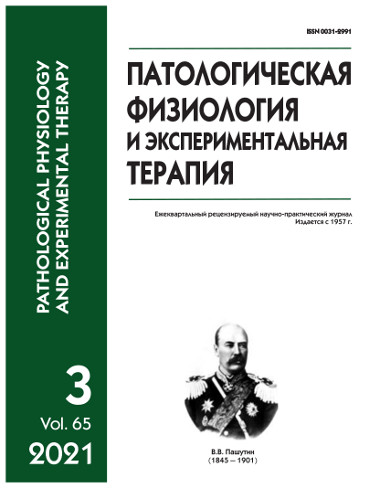Protective effects of ademetionine, cytoflavin, and dihydroquercetin in the liver of rats exposed to toxic effects of valproate sodium
Abstract
Background. Sodium valproate affects metabolism of gamma-aminobutyric acid to prevent the development of epileptic seizures. Many valproic acid metabolites potentiate its clinical effect; however, specifically these metabolites may result in chronic intoxication with liver damage. Aim: To evaluate the protective effect of ademetionine (Heptral), cytoflavin, and dihydroquircetin in rats exposed to the toxic action of sodium valproate (Depakene). Methods. Animals of the control group were administered valproate sodium at a toxic dose of 600 mg/kg, intragastrically. Rats of the experimental group were administered valproate sodium at a dose of 600 mg/kg with simultaneous administration of ademetionine, cytoflavin and dihydroquercetin. The duration of drug administration in all groups was 7 days, 14 days, 21 days, or 28 days. The contents of diene conjugates, malonic dialdehyde, reduced glutathione, and the activity of glutathione reductase, glutathione peroxidase, and glutathione transferase were measured in liver homogenates with standard spectrophotometric methods. Results. Under the toxic effects of valproate sodium in liver tissue, a significant increase in the contents of diene conjugates and malonic dialdehyde was found. The glutathione concentration decreased starting from day 14 of the experiment. The glutathione reductase activity increased by day 14 and practically reached the values of intact animals by day 28. The glutathione transferase activity began decreasing on day 14 and remained low until the end of study. The glutathione peroxidase activity increased starting from day 14 and reached maximum by day 28. The protective effect of ademetionine was manifested by a decrease in the contents of diene conjugates and malonic dialdehyde. There was a simultaneous activation of the glutathione system evident as increased activities of glutathione transferase and glutathione reductase. An antioxidant effect of cytoflavin was manifested mainly at the 1st wk of the experiment. The concentration of diene conjugates and malonic dialdehyde decreased, the activity of glutathione reductase increased, and the activity of glutathione transferase increased. Dihydroquercetin also had an antioxidant effect since the concentration of diene conjugates and malonic dialdehyde decreased. The activity of glutathione reductase and glutathione transferase increased. Conclusion. Sodium valproate significantly increased concentrations of lipid peroxidation products and impaired the glutathione antioxidant defense in the rat liver. Ademetionine, cytoflavin and dihydroquercetin help to restore the balance of lipid peroxidation and antioxidant protection in the rat liver during the toxic effects of valproate sodium. The most effective drug was ademetionine, since within 28 days, it significantly decreased the concentration of diene conjugates and malonic dialdehyde, and it increased the activity of the glutathione system.






